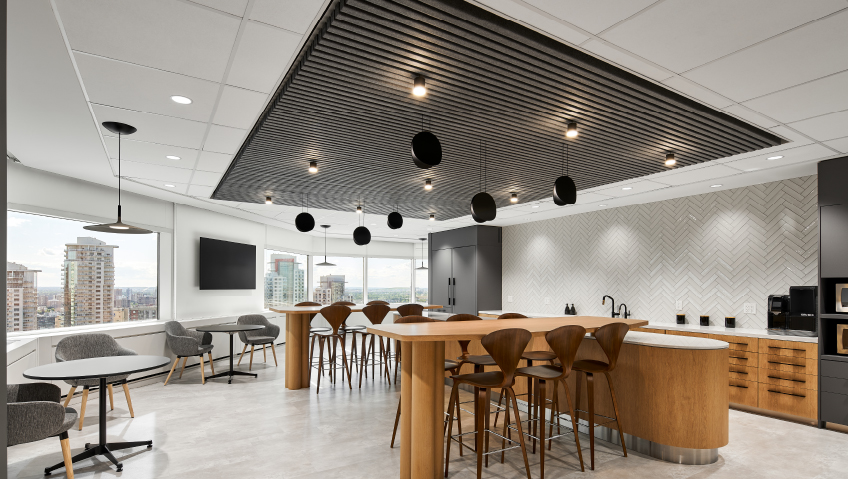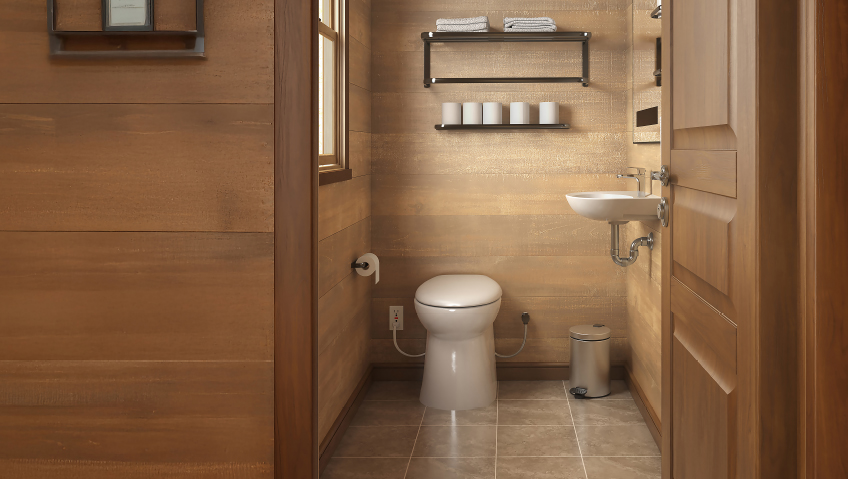Contemporary Office Interiors (COI) has gone national following a merger and acquisition that dramatically extended the contract furniture firm’s market reach. Announced on February 1, the merger with Business Interiors and purchase of Workplace Resource, both of Toronto, has transformed COI into “the leading contract furniture dealer in Canada,” reports a company press release. Thanks to the expansion, the business has grown from 130 employees to 210.
The expansion was driven by its desire to better serve its big clients, many of which have adopted a decentralized business model that spans the country.
“You might have an interior design firm in Toronto and a project management firm in Calgary working on a project in Vancouver,” notes COI Chief Sales Officer Geoff Lambert.
The company is now positioned to “support project management, commercial real estate, and interior design teams across the country,” he continues.
Incorporated in 1968, the firm now has operations in Calgary—where the head office is located—Toronto, Winnipeg, Mississauga, Edmonton, and Vancouver. While it does not have branches in Quebec or Atlantic Canada, it has partnered with dealerships to carry out projects in these regions. The company has done projects as far afield as the Northwest Territories, shipping furniture to the Stanton Territorial Hospital in Yellowknife over ice roads.
Contract furniture refers to non-residential furniture. It is the difference between a comfy couch in a family room that is ideal for loafing and a more officious-looking bench in a corporate lobby. Contract furniture is typically reliable, durable, and designed for people in skirts, suits, and other office attire, says Lambert.
The main product categories the company carries are seats, desks and workspaces, tables, storage, accessories, walls, space dividers, and commercial flooring. Furnishings are intended to support office staff in different spaces, from meeting rooms to video conferencing areas, welcome lounges, and private workstations.
He compares the firm with the automotive industry’s distribution model. “We’re the distributor, the servicer. We do the workplace planning and strategy, and we have agreements with the manufacturers to distribute their products,” he explains.
While COI works with over two hundred vendors, it has an exclusive supply partnership with venerable furniture manufacturer Herman Miller. Herman Miller just made a corporate acquisition of its own, in the form of furniture firm Knoll. A new entity called MillerKnoll, was formed from this purchase last year. COI also has an exclusive arrangement with the Maars Living Walls firm and carries brands such as Geiger, Nemschoff, and HAY.
The company mainly serves the office, healthcare, education, hospitality, and home office sectors. Of these, office furnishings are the biggest revenue generator. ‘Office’ in this context, is somewhat of an all-encompassing term that can include post-secondary institutions and healthcare.
The company complements its comprehensive product line-up with excellent customer service. “There are no other contract furniture dealerships that have the scope that we do in Canada. That’s what we believe is our unique differentiator and offering—our ability to support clients across Canada,” says Lambert.
Services include space planning and design, project management, relocation and change management, installation, delivery, and asset, and inventory management. Once the furniture has been delivered and set up, a COI employee can visit the customer to provide training and ergonomic assessments.
The company operates showrooms that display various wares, but due to COVID restrictions, moved to virtual tours and web-based presentations. The company can create 3D videos that offer a detailed, panoramic view of proposed office interiors for clients.
The “visualization component,” as Lambert calls it is an important service that allows customers to envision “the function and flow of a space,” before any furniture is installed.
“We’re able to provide the ability to walk through the built space before it’s built. What that gives you is a sense of how much space you have. What it’s like to sit at my new desk. How far the desk is from the coffee machine, proximity to different amenities in the office, et cetera,” he explains. “Everybody likes to see what they’re going to get before they make a major financial investment.”
Contemporary Office Interiors is a strong supporter of the ‘Living Office’ concept, a design approach espoused by office furnishings company Herman Miller. “The office in the past was a static thing. In the past, you had your eight-foot-by-eight-foot cubicle that had your printer, landline, computer monitor, and everything that you needed,” states Lambert. “You didn’t have to leave for the rest of the day.” By contrast, the Living Office idea recognizes that work patterns have changed, with employees toiling in a more interdependent fashion and moving about the office. The Living Office model also rejects a one-size-fits-all design approach. A law firm, for example, might require private spaces to ensure confidentiality, while other companies might prefer a more open, communal work environment.
“Living Office is really founded around the idea that the office is a changing and dynamic place. We want to set up the office to be able to flex. The office breathes like a living organism; it can get bigger or smaller. It can change in its capacity. We may want to adapt [the office] as our organizational needs and goals change,” he continues.
In a traditional office interior, creating new spaces might entail knocking down drywall and removing insulation in a disruptive process that generates significant waste. By contrast, the company’s demountable wall systems—pre-fabricated portable partitions—can quickly transform rooms with minimal fuss or environmental impact. COI is looking to develop its demountable wall business.
In the same spirit, it sources products that are manufactured “in a very sustainable way. I look at a sustainable product not as how recyclable is it at the end of its life, but does it have a long life? It might be one hundred percent recyclable, but if it only lasts five years, it’s not really a sustainable product,” says Lambert.
COI prefers manufacturers that operate net-zero facilities. This eco-friendly ethos extends to shipping and packaging, a major source of excess cardboard and Styrofoam. “We want to make sure things are shipped and packaged in a sustainable way,” he notes. “It’s a value of COI to minimize our environmental footprint as much as possible.”
Clearly, clients like this approach because COI has worked on several high-profile projects. For example, it has supplied furnishings for the head office of a rapidly growing tech firm, Absorb Software and growing hospitality companies like The OEB Breakfast Co. “We outfit all their locations across Canada. We’ve got a long partnership with them,” he states.
The company counts the University of Alberta as “a great partner,” according to Lambert. “We’ve done everything from their student residences to classroom spaces and causal and community spaces.”
Another assignment saw COI working on the interior of the Teck Acute Care Centre at BC Children’s Hospital. This project emphasized colour, natural light, and playful imagery in patient rooms, kid’s spaces, and areas for families to stay.
COVID has presented major challenges for all companies in North America, COI included. Lambert proudly notes that it “did not execute any layoffs at any of our locations, related to the pandemic.”
COVID accelerated a trend for remote work, with employees instructed to stay away from the office. The trend allowed the company to leverage its expertise in home office décor. Lambert ticks off a list of important design elements for a productive, comfortable home office, starting with a good chair.
“I spend more time in my office chair than on my mattress. It’s where I spend most of my waking life,” he points out.
He recommends suspension chairs made from materials that keep your body cool while dissipating heat. Good lighting is vital because “long-term eyestrain in a poorly lit space can lead to gradual damage to our vision.”
Having a monitor arm to raise your laptop to eye level, meanwhile, means you do not have to look down all day, straining upper back and neck muscles, he continues. And a height-adjustable desk allows remote workers to sit or stand, active movement being good for health and circulation.
COVID aside, Lambert says “finding great talent” is the biggest challenge at the moment. “We have a new young leadership group that is the next generation of COI. Our highest priority is finding the best available people that suit our culture. [People who] are responsive and personable to our clients. We’re in the business of making great places to work for everybody else, but we want to have a great workplace of our own.”
As for the future, the company is excited about enhancing its status as a national contract furniture provider. “Our goals are really to expand our service offering to cater to organizations that we support nationwide. [Offering] things like a single point of contact for all your locations across the country, an inventory management system, and really bringing [together] what is typically a localized offering,” he says.






